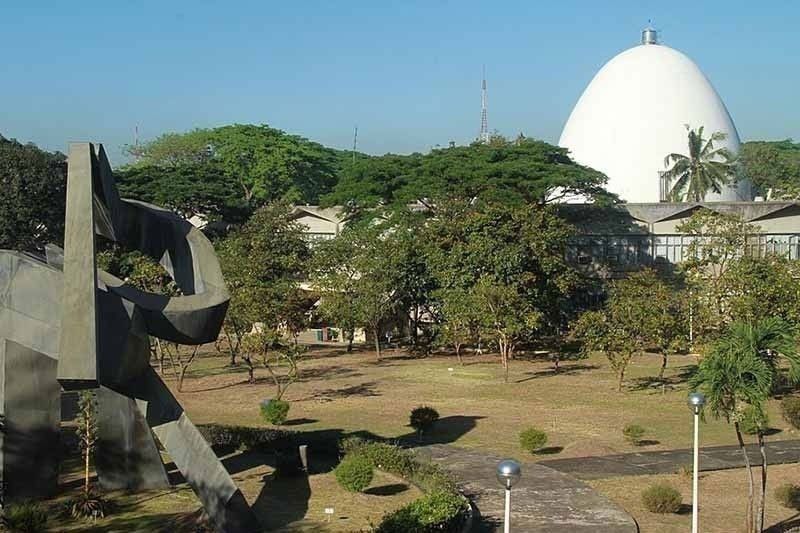Mission impossible: Embracing the nuclear ‘explosion’

Notes on the beat
MANILA, Philippines — A nuclear “explosion” of sorts could be on the horizon for the Philippines – one which could ensure a sustainable, sufficient and clean source of electricity for future generations, or one which could put the country in a deep hole.
Early this month, an all-women government delegation from the Department of Energy (DOE), Energy Regulatory Commission (ERC), Philippine Nuclear Research Institute (PNRI) and Department of Science and Technology traveled thousands of miles to Canada not to fangirl over Ryan Gosling or Prime Minister Justin Trudeau, but to learn from its long history of using nuclear energy for peaceful means.
They were accompanied by all-male executives from the private sector who were sent by the country’s top tycoons not to watch the Toronto Raptors play or see ice hockey, but instead get a first-hand look at what nuclear technology has to offer and how it can be used in the Philippines.
Canada, after all, is not just known for maple syrup, but is in fact regarded as a nuclear technology leader given its strong reputation for exporting top quality reactor systems and related infrastructure around the world.
With experience in nuclear infrastructure dating back to the 1950s, Canadian firms continue to demonstrate expertise across the full nuclear energy life cycle.
In the province of Ontario, for example, its Minister of Energy Todd Smith said nuclear power has played a huge role in their energy system, providing about 60 percent of their electricity daily.
“Because of nuclear, we were able to phase out coal a number of years back. So there’s no coal that’s a part of our system in generating electricity,” Smith said.
“We have some of the most effective nuclear facilities in the world that have operated safely for 40 years,” he noted.
Finding the appropriate model in response to the needs of the Philippines was what delegates from the country sought out to do.
During their almost two-week long trade mission, the Philippine delegates battled jet lag amid Canada’s chilly bed weather to attend numerous meetings and site visits daily.
Some also sacrificed much-needed naps during long bus rides to accommodate media interviews.
As part of the group of journalists who covered the nuclear trade mission, I, too, tried to learn as much about nuclear energy as I could.
There in chilly Canada, I realized that more hard work and sacrifice would be needed if the Philippines hopes to achieve its goal of having the first nuclear power plant in the country start commercial operations by 2032.
“The Philippines is just starting its nuclear program. For nuclear energy, we need more knowledge and exposure. Our policy is targeting somewhere around the next decade to have nuclear power,” DOE Undersecretary Sharon Garin said.
Human capacity and acceptance are currently among the roadblocks in the country’s nuclear energy path.
“The challenge is as we build more talent, if we don’t build our power plants or our nuclear technology, talent will just go to France, to Canada, to the US,” Aboitiz Power Corp. head of energy transition projects Felino Bernardo added.
In terms of acceptance, there is still a long way to go in the country in assuring the people that nuclear energy is safe and why it would be necessary to include it in the power mix moving forward.
Public acceptance survey
The DOE intends to do another acceptance survey this year to gauge public perception on the use of nuclear energy.
The last survey conducted in 2019 showed positive or favorable perception with 79 percent approval for the possible use and rehabilitation of the mothballed Marcos Sr.-era Bataan Nuclear Power Plant and 65 percent acceptability of building a new nuclear power plant.
However, if ERC chair Monalisa Dimalanta would have her way, she said the survey should be targeted.
“It’s hard if it’s national. Ask the people where the plant will be located (and) what their acceptance level is,” said Dimalanta, noting that many in the country might still have the “not in my own background mentality.”
In one of the nuclear research facility tours during the trade mission, Meralco first vice president and head of networks Froilan Savet jokingly said: “the only neutron I know is Jimmy Neutron,” drawing laughter from the delegates.
Indeed, there is still a cloud of mystery surrounding nuclear energy for many Filipinos. Even just hearing the word “nuclear” brings fear to some, with the Chernobyl disaster immediately coming to mind.
The government, however, assured stakeholders that the inclusion of nuclear energy in the country’s power mix will be carefully undertaken to ensure that it is safe and secure.
“In radiation protection, safety and safeguards, we are quite advanced in that aspect since we are doing that already because now we know how it is done in medical facilities, in radiation facilities. But of course we need to capacitate ourselves in terms of the nuclear power side since we do not have a nuclear power plant yet,” PNRI deputy director Vallerie Samson said.
Waste management
On radioactive waste management, Samson highlighted the need for a law that would establish a radioactive waste management agency in the country.
“It needs to be a full agency that will do radioactive waste management. The radioactive waste management agency will mainly take care of the high level waste. The low level and intermediate level, usually it’s the plant that houses that and normally the high level waste, it’s the government that takes care of it,” she said.
In Canada, a Nuclear Waste Management Organization (NWMO) representative said they don’t shy away from saying in their engagements with the public that nuclear waste is indeed hazardous, but at the same time, they also assure them that they know how to deal with it, control it and manage it.
The NWMO was established for the safe and long-term management of Canada’s used nuclear fuel in a manner that protects people and the environment for generations to come.
It plans to contain and isolate Canada’s used fuel in a 500 to 800-meter deep underground geological repository in an area with suitable geology and an informed and willing host.
For the Philippines, Garin said: “When you do a sitting for where you want to dispose of, it’s practically the same as where you want to put a power plant. More or less it will have the same criteria as radioactive waste management.”
“So we need stakeholder involvement. If they understand, they can help us make the people understand that nuclear (power) is necessary, that nuclear (power) is safe,” she added.
Now armed with these fresh insights from Canada, the delegates face the arduous task at home as they embark on a bigger mission – convincing and enlightening more Filipinos as to why nuclear is necessary for the Philippine energy sector not 20 or 30 years from now, but immediately in the coming decade.
- Latest
- Trending























